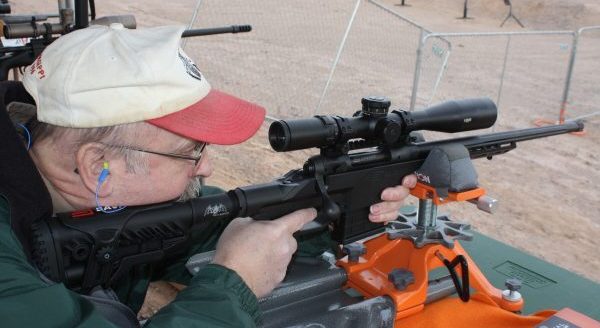
New FBI crime data for 2016 shows once again that rifles of any kind, such as this bolt-action model, are used in a fraction of homicides nationwide. (Dave Workman)
For the second straight year, violent crime has risen in the U.S., according to newly-released data from the FBI Uniform Crime Report for 2016, but the gun prohibition lobby will still have problems exploiting the numbers to justify its agenda.
For example, rifles of any kind are still used in a fraction of the total homicides. In 2016, according to the FBI Report, there were 15,070 homicides, of which 11,004 were linked to firearms. Of that number, only 374 were specifically attributed to rifles of any kind across the country, although 3,077 of those murders involved “unidentified” gun types.
The number of slayings with knives or other “cutting instruments” is up to 1,604 – the same figure in 2012 – and another 472 were killed with blunt objects.
Indeed, more people appear to have been beaten to death with hands or feet (656) than were killed with rifles and shotguns combined (636).
For example, in Washington State, where gun control proponents have been claiming an “epidemic of violence,” the number of homicides actually declined, from 209 in 2015 to 195 last year. Of those, 127 involved firearms last year, down from the 141 gun-related murders the previous year.
However, in 2016 the number of active concealed pistol licenses in Washington soared by 61,898. By the end of last year, there were 571,476 active CPLs in the state, up from the 509,578 posted on Dec. 31, 2015 by the state Department of Licensing.
In a state where anti-gunners have been hoping to ban so-called “assault weapons,” rifles of any kind were involved in only 11 of those 127 gun-related slayings. Almost half of them were killed in one of highest-profile crimes in the state that year, the multiple homicide at Burlington’s Cascade Mall in which the killer used a .22-caliber rifle. That’s more than the three teens who died in the Mukilteo shooting less than two months earlier, which involved a .223-caliber Ruger rifle often misidentified as an “assault rifle.”
Seattle-based gun prohibition lobbying groups can’t even argue that passage of their Initiative 594 in 2014 had an impact because the Mukilteo killer passed a background check and the Burlington killer took the .22-caliber rifle from home without permission, making the issue moot.
On the other hand, California – where several gun control laws have been adopted over the past few years – saw an increase in gun-related homicides, from 1,275 in 2015 to last year’s 1,368.
According to the FBI, there were an estimated 17,250 slayings in 2016. That’s up 8.6 percent over 2015 on the national scale, which means Washington actually went against the trend.
Overall violent crime rose 4.1 percent last year but property crime fell 1.3 percent continuing a 14-year trend that has seen steadily declining property crime.